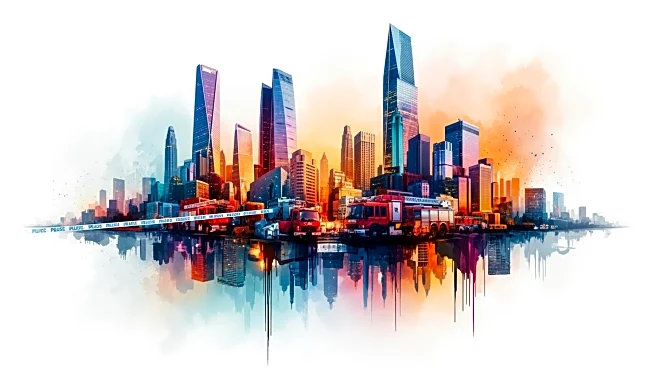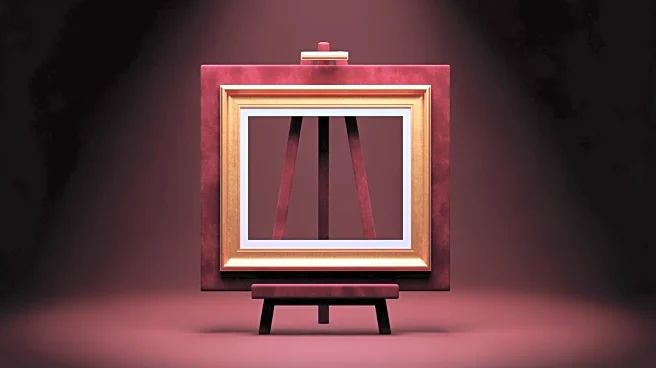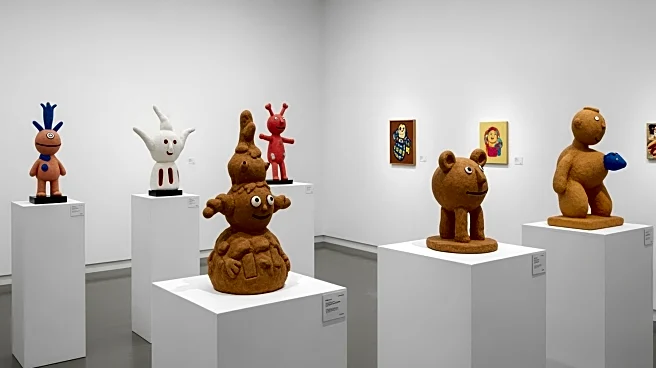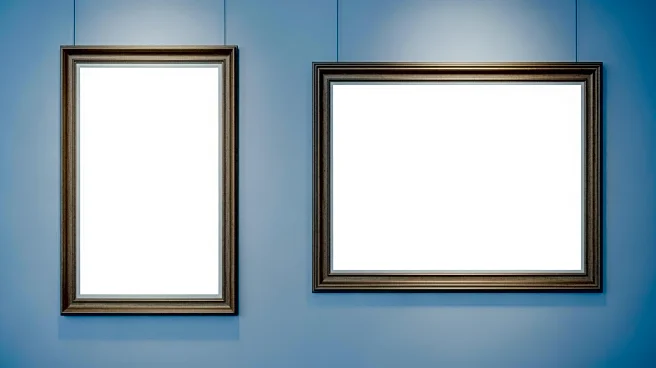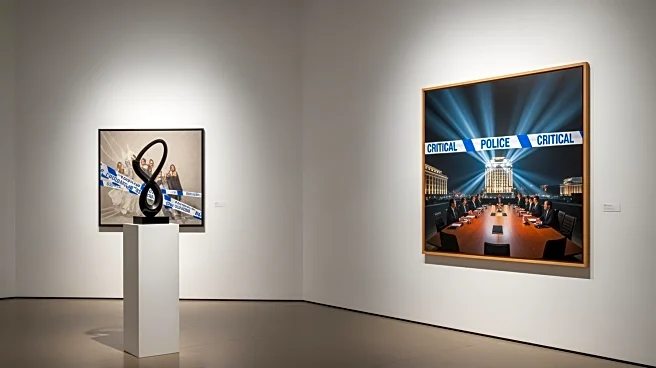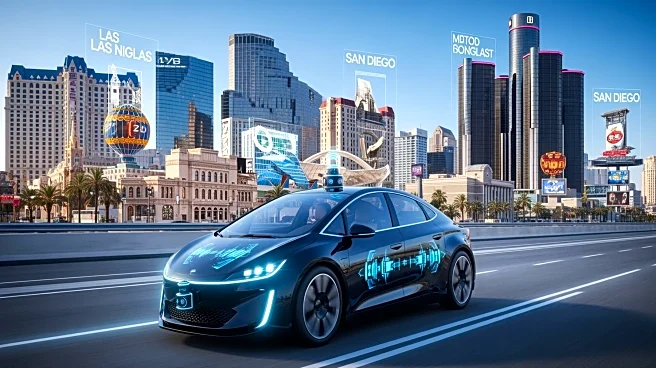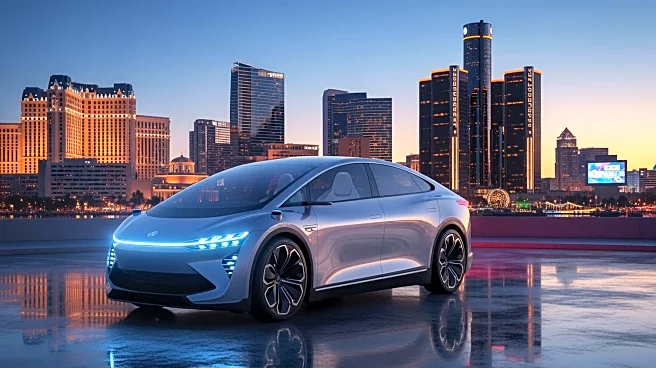What's Happening?
Brazilian British artist Caio Locke is showcasing his work in a solo exhibition titled 'The Geometry of Dreams' at London's Eclectic Gallery. Locke's art is known for its intricate and imaginative urban landscapes that blend elements of reality with fantastical
elements. His paintings explore themes of utopia and collective consciousness, drawing inspiration from both historical and futuristic urban environments. The exhibition features a range of works from various series, including 'Dreams of Ra' and 'Icarus,' which delve into the interplay between civilization and climate change. Locke's process involves both planned and intuitive techniques, often incorporating real-world architectural influences into his fictional cityscapes.
Why It's Important?
Caio Locke's work offers a unique perspective on urban environments, challenging viewers to reconsider the boundaries of architecture and the potential for cities to evolve. By blending real and imagined elements, Locke's art encourages a dialogue about the future of urban spaces and the role of imagination in shaping them. This exhibition not only highlights Locke's technical skill and creativity but also contributes to broader discussions about climate change and urban development. As cities around the world face increasing environmental and social challenges, Locke's work serves as a reminder of the power of art to inspire change and envision new possibilities.
What's Next?
Following the exhibition at Eclectic Gallery, Locke's work may continue to gain attention in the art world, potentially leading to further exhibitions and collaborations. His exploration of urban landscapes and climate themes could resonate with audiences and collectors interested in contemporary issues. Additionally, Locke's recent visit to Tokyo and the completion of new works suggest that his artistic journey is evolving, with potential new phases and projects on the horizon.
Beyond the Headlines
Locke's art raises questions about the ethical and cultural implications of urban development and climate change. By presenting cities as both real and imagined, his work challenges viewers to consider the impact of human activity on the environment and the potential for creative solutions. The exhibition also highlights the role of art in fostering dialogue and reflection on pressing global issues, emphasizing the importance of imagination in addressing complex challenges.
